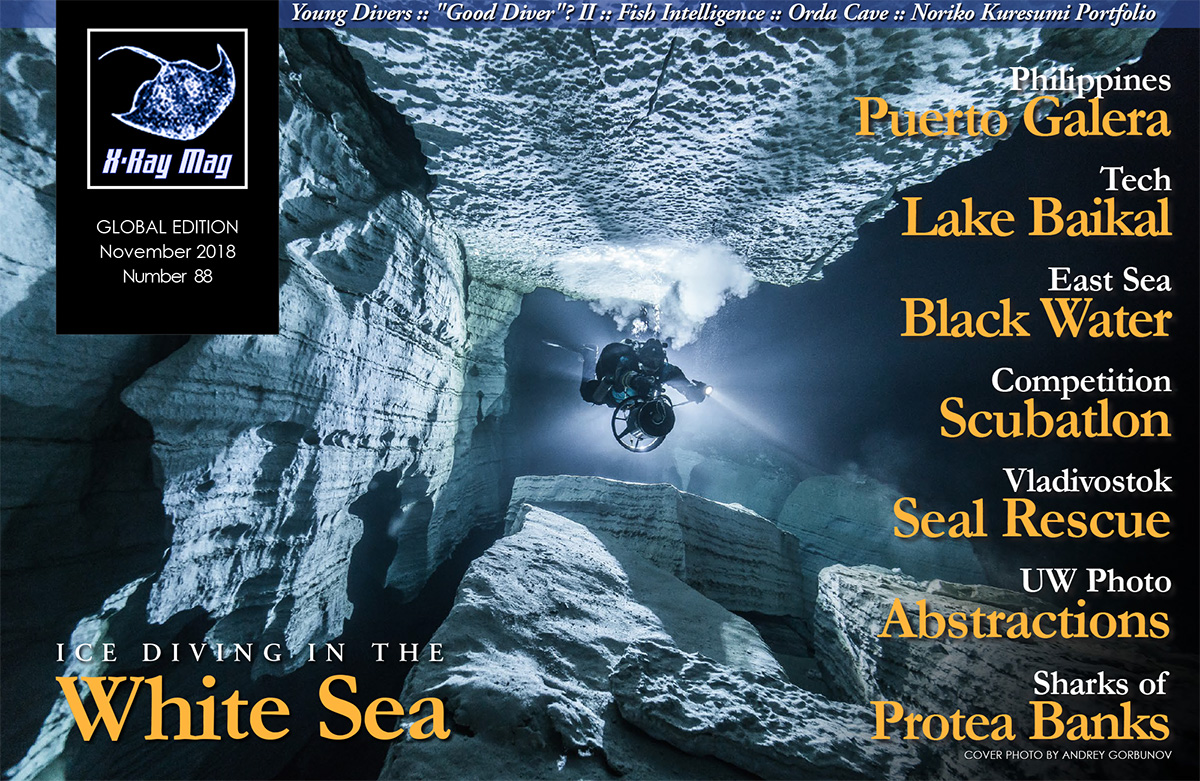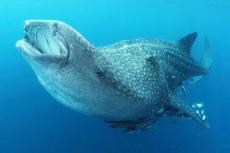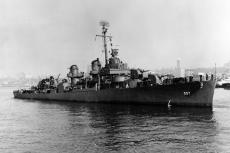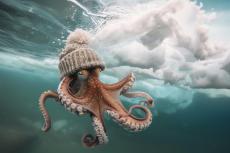I have spent decades covering the Caribbean for major dive magazines. But when it is time for a personal trip, I usually set my sights farther from home. One destination that has become a personal favorite over the last ten years is the Philippines. The waters of this island nation lie within the “Coral Triangle,” a region recognized as having one of the most biodiverse marine ecosystems on the planet.
Contributed by
Factfile
TIPPING: The resort does not take credit card for staff tips. If you should need additional cash, there is an ATM machine a short walk into town, provided you are OK with it being dispensed in local Philippine currency.
ENTRY/VISA: A valid passport with at least six months left before its expiration date along return ticket is required for the entry into the Philippines. US and European nationals automatically receive a 21-day tourist visas on arrival. Guests staying longer, or those with passports of another nationality, will need to either contact the resort or see: immigration.gov.ph.
GETTING THERE: The gateway into the Philippines is through Ninoy Aquino International Airport (MNL) in Manila. Most international flights into Manila arrive between 9:00 pm and 3:00 am. As part of their services, Atlantis Dive Resort can coordinate an overnight stay in Manila among the better hotels, and they also provide door-to-door transportation services to the resort.
CURRENCY: The resort’s reservations staff usually advises getting a small amount of currency (about US$30) exchanged for PHP Philippine Pesos, which can be done at the airport when you arrive. During the drive to Batangas, the driver will make at least one restroom stop where there is a McDonald’s, Starbucks or store to get something to eat, which is where those Philippine Pesos will come in handy.
For more information, visit: Atlantishotel.com
Walt Stearns is a widely published dive writer, underwater photographer, scuba instructor, certified cave and rebreather diver, and an SSI Platinum Pro5000 member based in the US state of Florida.
He is the founder and publisher of the Underwater Journal.
For more information, visit: WaltStearns.com.
Divers visiting the Philippines enjoy a rich variety of underwater landscapes and bountiful marine life, and can choose from a number of resorts that provide excellent service at a reasonable price. A good example is the Atlantis Dive Resort in Puerto Galera.
First impressions
The town of Puerto Galera lies on the northern tip of the island of Mindoro. Travelers arriving at Manila’s international airport take a 65-mile van ride to the town of Batangas, then a ferry trip to Sabang Beach, which is the coastal resort area on the northern end of Puerto Galera.
With numerous dive resorts and shops offering diving services at relatively inexpensive rates, Sabang Beach is certainly a place where divers will feel at home. There are also numerous restaurants and clubs offering a range of dining options and lively nightlife. These added draws sweeten the pot, but it is the quality of the reefs that really explains the area’s popularity with divers, who come from around Southeast Asia, North America and beyond.
Due to the large tidal flats that front most of Sabang Beach, the near-shore depths are too shallow for anything larger than a skiff to approach the Atlantis Resort proper. On arrival, you will disembark 100 yards to the left of the resort’s entrance and take a short stroll along the waterfront. Don’t worry, all of your luggage is taken care of, and brought to the resort right after you.
From the beach, it is hard to get a feel for the layout of the Atlantis Resort property. At the beachside entrance, the resort’s bar and the dive staging area sit sandwiched between a local restaurant and bar on one side, and another dive operation on the other, concealing what lies within.
Once you are beyond the beachside entrance, you will discover the resort is actually quite attractive and surprisingly larger than your first impression would have allowed. In all, the property encompasses 40 guest rooms and suites around a centrally located restaurant and a large freshwater pool. The grounds include a boutique, full service spa, and a dive center with retail space, classroom and camera room. To accomplish this centralized layout, the resort is very cleverly built in a long rectangular formation that extends part way up the hillside overlooking Sabang Beach.
Here is where I should mention an interesting quirk in the relation between Atlantis Dive Resort and the town of Sabang. There are few motorized vehicles in or around town. Instead, everyone gets around on foot. One of the public walkways runs right through the resort, separating the dive staging area and beach bar from the resort’s dive shop and the guests’ gear storage area. The resort’s own restaurant sits to one side of the public walkway while a local restaurant and bar occupy the other side facing the beach.
This may seem a bit strange to first-time visitors, but there is no security issue, as non-guests know not to venture off the path into the resort’s property uninvited, and the resort itself has both security cameras and personnel watching everything day and night. While the resort’s restaurant does not offer a scenic ocean view, the ambiance is still pretty nice as the dining area sits beneath a giant open-air thatch roof overlooking the resort’s large freshwater pool. The resort’s kitchen uses fresh local fruits and meats to create a range of local and international dishes that change on a daily basis.
Amenities
Like a growing number of full-service dive resorts in the region, Atlantis offers a full-service spa overlooking the pool opposite the restaurant. After 27-plus hours of travel and transfers, a 90-minute deep tissue massage was just the ticket in getting the kinks that comes with prolonged air travel ironed out, leaving me feeling more ready to hit the reefs.
All guest rooms have air conditioning and include en-suite private bath and shower facilities with hot water provided by a solar heating system. The deluxe suite I booked came with one full and one twin-size bed, a large flat screen LCD TV with movie and sports channels and a DVD player, a refrigerator, a coffee/tea maker, a fully stocked mini bar, and even a supply of emergency toiletries (toothbrush, toothpaste and shaving kit). Even the least expensive rooms in the resort, which are located on the second floor above the dive staging area, provide wireless Internet access and in-room safety deposit boxes.
Management at the resort advises that you should not drink the water from the tap in the rooms. Thus, your options include the bottled water in the room or the water available in the restaurant, as well as at the bar and dive shop, which are all completely safe.
One of the resort’s roomier dwellings, particularly for families with small kids is the Seaview Suite, which is located above the dive center on the third floor. The suite’s nickname, the Flintstone Room, comes from the stone-pattern stucco walls and the tree trunk running from floor to ceiling, which serves as the ladder for the bunk beds adjacent to the room’s one queen bed. Additionally, this suite has a large terrace overlooking the beach and ocean.
Dive center
Atlantis’ dive center is split into two areas. On the landward side are storage facilities and a rinse area with four tanks—one just for cameras—along with freshwater showers, cubbyholes for stowing masks, fins and dive lights, and a large drying room for hanging wetsuits, BCDs and regulators. The other side of the center faces the beach and comprises a large staging area where divers secure the tanks they need from the large selection of aluminum 80s with air or 32-percent nitrox. Once your tank, BCD and regulator are assembled, the staff then carries it down to the beach and into the skiffs.
The Atlantis’ camera room is first class, with solid, spacious worktables covered with rubber matting—a feature I prefer over moisture-absorbing carpet. Underneath the tables are shelves for storing equipment and multiple sets of power outlets in both 220 and 110 volts, which accept both standard US and European plugs, plus two air-gun systems to blow away water from recesses in equipment. The room is climate controlled, so working conditions are comfortable, and the air has lower humidity.
Diving
The daily dive schedule usually involves a series of single dives set around 8 to 9 a.m., 11 a.m., 2 p.m. and 4 p.m., with trips back to the resort after each to change out the tanks. This is because the majority of the diving in the Puerto Galera/Sabang Beach area is no farther than a 20-minute ride from Atlantis’ beachhead, and several are less than five minutes away. The resort maintains a fleet of 18-foot skiffs, which typically carry no more than six divers, plus a dive guide and driver.
The skiffs have neither sun protection nor tank holders. So, my recommendation here is to pack a hat, and to be a bit more diligent with your camera setups, since both dive gear and camera equipment are placed on the floor of the skiff.
My first dive at Atlantis was at a site named Monkey Beach, which is an eight-minute boat ride to the east of the resort. This site proved to be indicative of the general bottom topography of the area, with the reefs starting near the shoreline and following either a steep slope or a series of step-like ledges down to depths between 70 and 105ft (21–32m), then terminating into a semi-flat sand and rubble floor.
At the start of the dive, there was no noticeable current, but water flow picked up during the second half of the dive. Currents around this region of the Philippines are tidal in origin, ebbing and flowing throughout the day, and changing direction from one side to the other during each high and low cycle. At some spots, the current can get quite strong, turning dives into drifts.
Underwater visibility was more than adequate, varying between 50 to 60ft (15–18m) from what I gathered from the dive guides, and what you should typically expect around Sabang Beach. The water temperature in March was around 76 to 77°F (24–25°C). The diving here is not about how far you can see, but what you can find in the spaces you cover.
This region of the Philippines is a macro photographer’s paradise, with an endless supply of subject matter from the small and colorful such as nudibranchs, peacock mantis shrimp and mandarinfish, to the fantastically cryptic like robust ghost pipefish, pygmy seahorses and dragon seamoths. As should be expected, the dive guides know their way around all the dive sites, and they are quite helpful and accomplished hunters when it comes to finding small critters.
Other than the occasional sea turtle, do not expect to see any large pelagics around Sabang Beach. The place for wide-angle photography is Verde Island, which I will get to in a moment. Two of my favorite sites around Sabang Beach were Boulders, a steeply sloping reef comprised of huge boulders covered in corals, and Giant Clams, which is named for a nearby giant clam farm. This site is located within a protected bay and features a shallow area adjacent to a gentle slope that is ideal for true muck diving.
Verde Island
What I would consider the most memorable adventure provided by Atlantis’ Puerto Galera Resort was the three-tank dive adventure to neighboring Verde Island.
For this all-day trip, divers are loaded onto a 50-foot banca-designed dive boat for an 8 am departure across the Verde passage, which separates Puerto Galera from Batangas. The trip to Verde Island takes approximately an hour and a half. Once there, the schedule is two dives, followed by a trip to shore for lunch, where the staff puts together a pretty amazing lunch buffet. After an hour on the beach, it is time for the third dive, and the return ride to the resort, with time to relax before dinner.
Verde offers three very interesting and beautiful sites: Coral Gardens, Washing Machine and Drop off. Our first dive was made at Drop Off, as the tides were in our favor at that time. This site turned out to be my personal favorite, offering excellent underwater visibility, interesting topography and a tremendous variety of fish and coral. The site is a huge, broad-based pinnacle that just breaks the surface, with one side dropping sharply down a couple hundred feet, while the other side takes a more gradual downward profile, terminating at a broad plateau 40ft (12m) deep, running back towards Verde Island. When the tide approaches its zenith, the currents can really sweep the steeper side of the pinnacle, making it a challenge to stay in one spot. But watching the banquet of small fish, corals and crinoids compete for space makes the effort worth it.
Final thoughts
Overall, my experience at Atlantis’ Puerto Galera Resort was quite good. The staff was very friendly, helpful and accommodating. Rooms at the resort are spacious and clean, with plenty of shelf space. The resort’s dining fare was tasty, with made-to-order breakfast, and the lunch and dinner menu varied enough to keep things interesting. The soups were especially savory.
Would I return? Absolutely! The plane rides may be longer than to Caribbean destinations closer to home, but when you factor in the quality of the marine environment, the excellent service and the relative cost-per-dive, a trip to Atlantis Dive Resort starts to look pretty good. ■
For more information regarding bookings, and what you need to bring, visit Atlantis Dive Resorts at: Atlantishotel.com.

































































